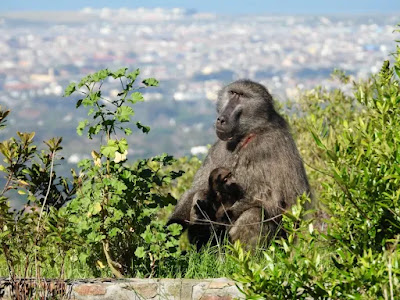How Cape Town is learning to live with baboons
On the outskirts of Cape Town an unusual resident can often be found rummaging through rubbish bins and around back yards. The chacma baboon, native to southern Africa, has become quite familiar with the urban setting.
Most of these primates spend the majority of their time in the hills and slopes on Cape Town’s periphery. However, their traditional feeding grounds are on the flatter lowground, right where the suburban sprawl has arrived in recent decades.
This has created an urban conflict, with many human residents unhappy with the presence of the primates.
Baboon researcher Esme Beamish, from Cape Town University’s Institute for Communities and Wildlife in Africa, explains that it makes sense for the monkeys to venture into the city in search of food. “Our environments are enticing not only because of the excess food that we have, the lush gardens and the bins, but also play spaces [for baboons],” she says.
“Even if we had the perfect baboon proofing of urban areas, they would still be attracted.”
However, there are consequences for baboons and humans alike. Some baboons have come into conflict with residents and their pets. Whilst looking for food, others have ruined farmers’ and local winemakers’ crops.
Beamish is concerned for the monkeys’ welfare. “[Baboons] come into contact with dogs, motorcars and electric power lines. These are some of the major causes of death and injury,” she says.
“What we now have is … not a very healthy population. They’ve got skin conditions because they’re spending too much time in bins. They’ve got appalling teeth.”
The local council and residents have previously attempted to mitigate these issues by reducing food waste and using “baboon-proof” bins, as well as fences that were introduced in 2013 to keep baboons out.
In some instances, residents have resorted to shooting the monkeys with pellet guns and particularly aggressive, or “problematic,” baboons have been euthanized.


Komentar
Posting Komentar